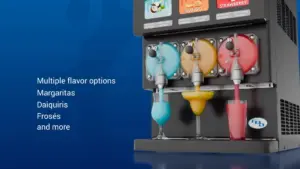Robots Take the Road: How Millennials Get Their Food
In January of 2017, DoorDash announced a pilot partnership with Starship Technologies, one of the most prominent companies producing delivery robots. The Co-Founder and Chief Product Officer of DoorDash, Stanley Tang, described robot deliveries as “a unique complement to the existing Dasher community.”
During the pilot of the program “DoorDash used an algorithm to decide in real-time if the delivery made more sense for a human courier or a robot to complete.”
Typically, robots would be used when the order placed was within a two-mile radius. In the United Kingdom, one of over 15 countries in which robots have been tested, Starship robots are used by Just Eat, and Co-Founder and CEO of Starship Technologies Ahti Heinla hopes to have these robots completely unmanned by this year. Currently they are maintained by handlers.
Heinla also anticipates the number of robots to potentially reach the millions in five years’ time. This would be a huge adjustment seeing as London, one year ago, only had 20.
The presence of these robots has also sparked concern. NewDealDesign Founder Gadi Amit, in his partnership with Postmates to design its own robot, even admits that “the big difficulty is not technology; it’s the interaction with humans, how to mitigate rejection, and assimilate into the human environment.”
In the state of Washington, regulations are being proposed that would ensure the robots operate only “on sidewalks and crosswalks” and “yield the right of way to pedestrians and bicycles.”
Main concerns across the board focus on interaction with pedestrians and keeping walkways passable for civilians. Other concerns include safety of pedestrians, especially in light of a KiwiBot catching fire on a university campus in December of last year. While the incident was attributed to a faulty battery it still set an uncomfortable precedent in an industry that was largely free of incidents beforehand.
The other concern, despite claims on the part of robot-producing companies and delivery services, is that these robots will encroach on the livelihood of the 500,000 people who work as delivery drivers and couriers as delivery robots become more widespread.
The robot delivery services have, however, been greatly praised on both university and corporate campuses. About a week ago, George Mason University in Virginia implemented the first robot delivery system compatible with students’ meal plans.
Additionally, robot delivery has also been implemented at Intuit, a company with a large corporate campus within the Silicon Valley. Starship’s robots “traverse all 4.3 acres of the Intuit campus without a chaperone” filling a void where previously “there was no delivery service between employees and the company’s food-service provider” and “workers had no other option but to walk for lunch or skip a meal.”
While Postmates longs for a future in which robots may even “walk someone home at night,” “flag potholes,” or help end food insecurity, when it comes to robot-human social interaction on a larger scale, there is much that remains to be seen.
For the latest news, videos, and podcasts in the Food & Beverage Industry, be sure to subscribe to our industry publication.
Follow us on social media for the latest updates in B2B!
Twitter – @FoodMKSL
Facebook – facebook.com/marketscale
LinkedIn – linkedin.com/company/marketscale








